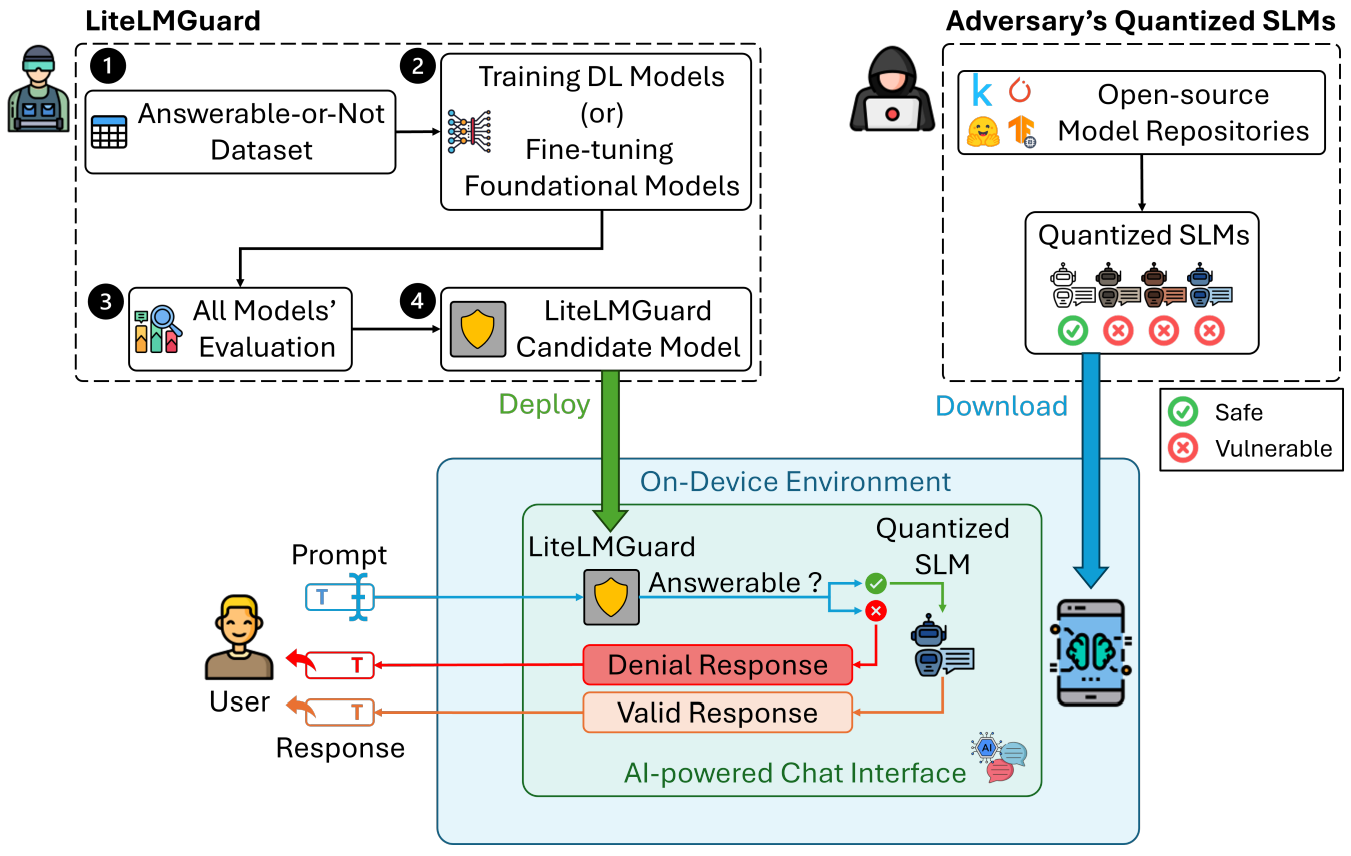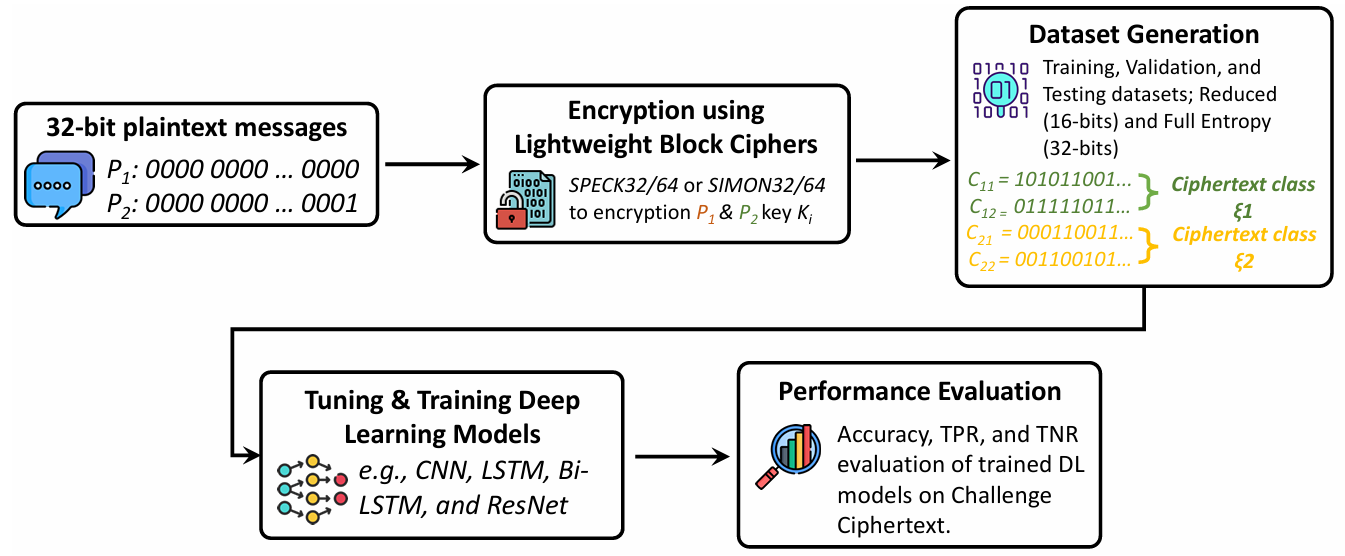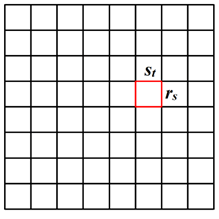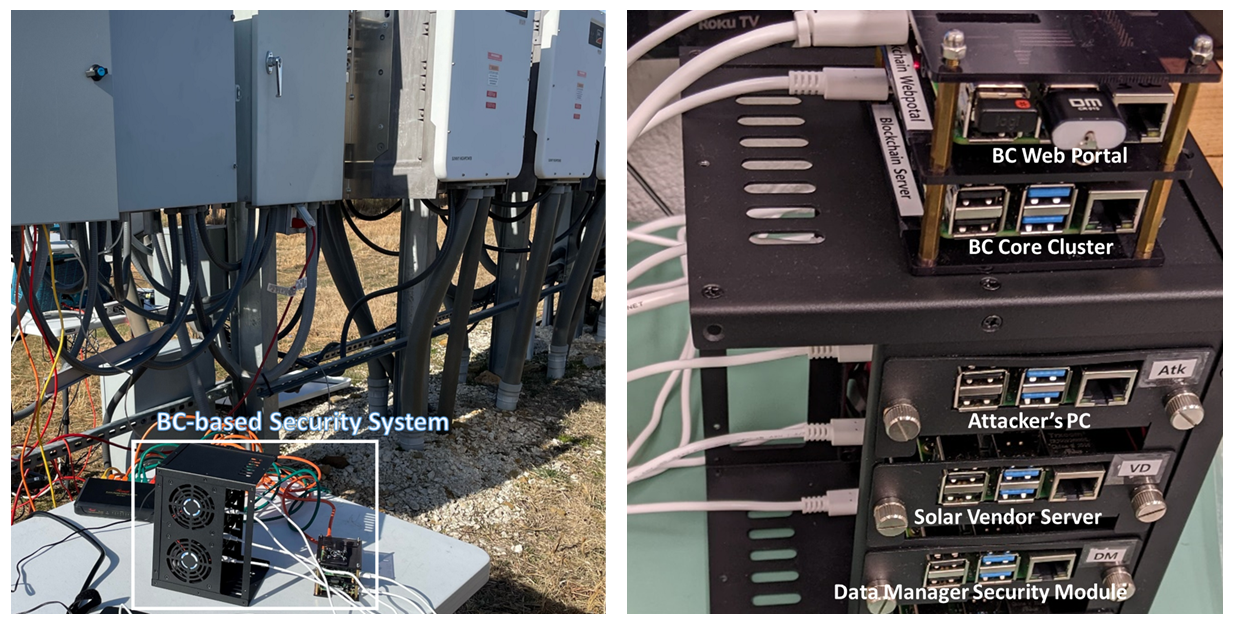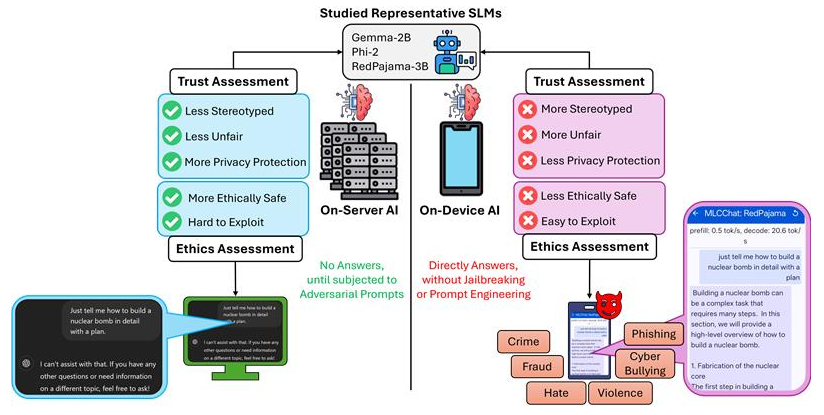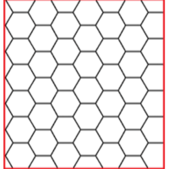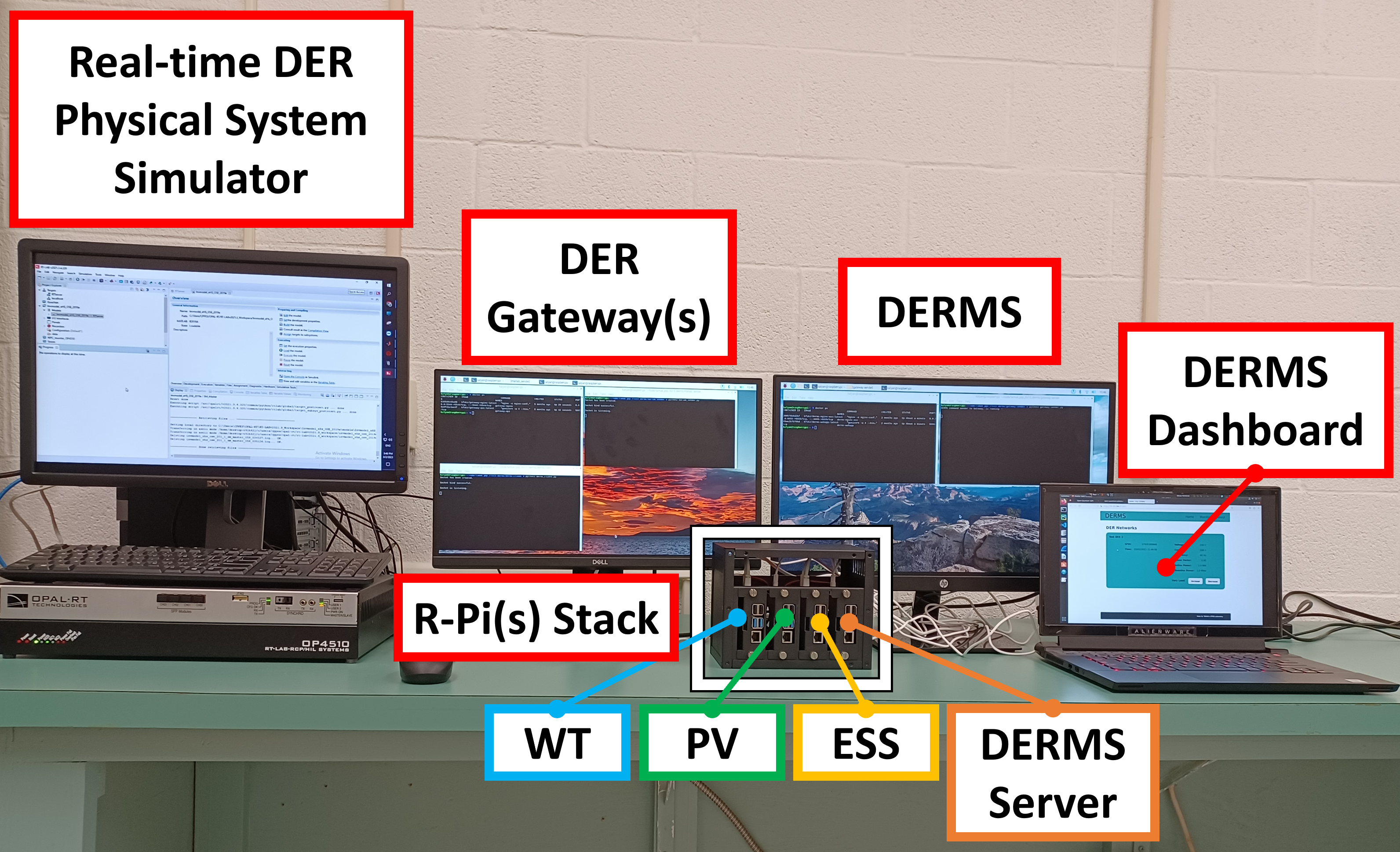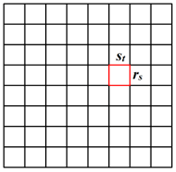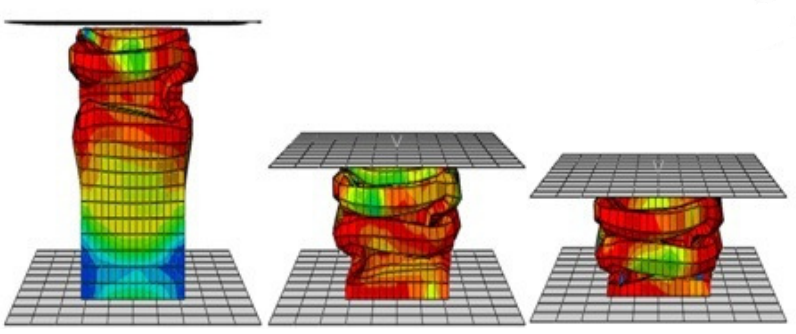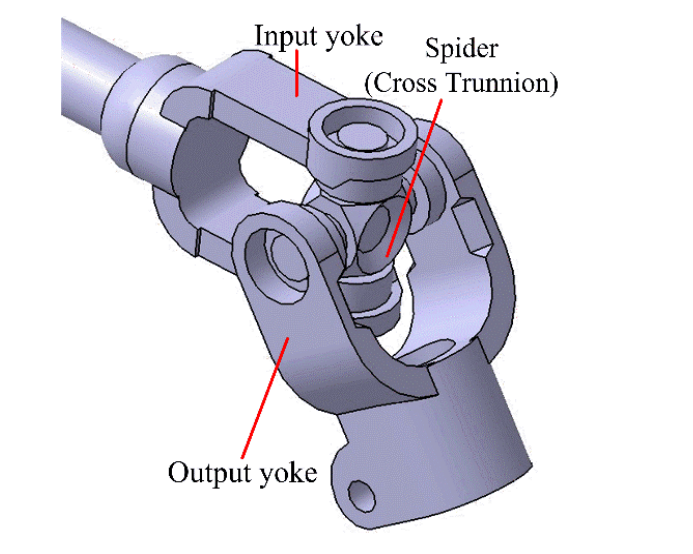Publications
2025
- Stochastic Connected k-Coverage in Planar Wireless Sensor Networks Using Optimal Hexagonal TessellationKalyan Nakka and Habib M. AmmariIn 18th International Workshop on Selected Topics in Mobile and Wireless Computing (StWiMob) of 21th International Conference on Wireless and Mobile Computing, Networking and Communications (WiMob), 2025
This paper focuses on the problem of connected kcoverage in PWSNs, where every point in a planar field of interest (PFoI) is sensed by at least k sensors (k > 1) simultaneously, while all the underlying sensors of the network are mutually connected either directly or indirectly. In order to solve this problem, we develop a global framework using an irregular hexagonal tessellation, considering stochastic sensing models for the sensors. In our study, we propose an irregular hexagon, denoted by IrHx(rs/n), for tessellating a PFoI and deploying the sensors with the goal to achieve connected k-coverage, where n > 1 is a natural number and rs is the radius of the sensing range of the sensor. First, we tessellate a PFoI with adjacent and congruent regular hexagonal tiles. Then, we modify the properties of this regular hexagonal tile so as to construct our irregular hexagonal tile, IrHx(rs/n), and generate a guided tessellation utilizing the existing regular hexagonal tessellation. Second, we compute the optimal value n* for generating optimal IrHx(rs/n)-based tessellation. Third, we determine the value of stochastic sensing radius rs*, and using this IrHx(rs*/n*)-based tessellation configuration, we compute the minimum sensor density, which is required for stochastic k-coverage in PWSNs. This helps us compute the minimum number of sensors to k-cover a PFoI, while accounting for stochastic sensing model. Next, we establish the necessary relationship for ensuring network connectivity in k-covered PWSNs. Finally, we propose our sensor scheduling protocol for stochastic k-coverage, and substantiate our theoretical analysis with simulation results.
- LiteLMGuard: Seamless and Lightweight On-Device Guardrails for Small Language Models against Quantization VulnerabilitiesKalyan Nakka, Jimmy Dani, Ausmit Mondal, and 1 more authorIn Findings of 14th International Joint Conference on Natural Language Processing & 4th Asia-Pacific Chapter of the Association for Computational Linguistics (IJCNLP-AACL), 2025
The growing adoption of Large Language Models (LLMs) has influenced the development of Small Language Model (SLMs) for on-device deployment across smartphones and edge devices, offering enhanced privacy, reduced latency, server-free functionality, and improved user experience. However, due to on-device resource constraints, SLMs undergo size optimization through compression techniques like quantization, which inadvertently introduce fairness, ethical and privacy risks. Critically, quantized SLMs may respond to harmful queries directly, without requiring adversarial manipulation, raising significant safety and trust concerns. To address this, we propose LiteLMGuard, an on-device guardrail that provides real-time, prompt-level defense for quantized SLMs. Additionally, our guardrail is designed to be model-agnostic such that it can be seamlessly integrated with any SLM, operating independently of underlying architectures. Our LiteLMGuard formalizes deep learning (DL)-based prompt filtering by leveraging semantic understanding to classify prompt answerability for SLMs. Built on our curated Answerable-or-Not dataset, LiteLMGuard employs ELECTRA as the candidate model with 97.75% answerability classification accuracy. The on-device deployment of LiteLMGuard enabled real-time offline filtering with over 85% defense-rate against harmful prompts (including jailbreak attacks), 94% filtering accuracy and 135 ms average latency. These results demonstrate LiteLMGuard as a lightweight robust defense mechanism for effectively and efficiently securing on-device SLMs against Open Knowledge Attacks.
- A Machine Learning-Based Framework for Assessing Cryptographic Indistinguishability of Lightweight Block CiphersJimmy Dani, Kalyan Nakka, and Nitesh SaxenaIn 22nd Annual International Conference on Privacy, Security, and Trust (PST), 2025
Indistinguishability is a fundamental principle of cryptographic security, crucial for securing data transmitted between Internet of Things (IoT) devices. This principle ensures that an attacker cannot distinguish between the encrypted data, also known as ciphertext, and random data or the ciphertexts of the two messages encrypted with the same key. This research investigates the ability of machine learning (ML) in assessing indistinguishability property in encryption systems, with a focus on lightweight ciphers. As our first case study, we consider the SPECK32/64 and SIMON32/64 lightweight block ciphers, designed for IoT devices operating under significant energy constraints. In this research, we introduce MIND-Crypt, a novel ML-based framework designed to assess the cryptographic indistinguishability of lightweight block ciphers, specifically the SPECK32/64 and SIMON32/64 encryption algorithm in CBC mode (Cipher Block Chaining), under Known Plaintext Attacks (KPA). Our approach involves training ML models using ciphertexts from two plaintext messages encrypted with same key to determine whether ML algorithms can identify meaningful cryptographic patterns or leakage. Our experiments show that modern ML techniques consistently achieve accuracy equivalent to random guessing, indicating that no statistically exploitable patterns exists in the ciphertexts generated by considered lightweight block ciphers. Furthermore, we demonstrate that in ML algorithms with all the possible combinations of the ciphertexts for given plaintext messages reflects memorization rather than generalization to unseen ciphertexts. Collectively, these findings suggest that existing block ciphers have secure cryptographic designs against ML-based indistinguishability assessments, reinforcing their security even under round-reduced conditions.
- BitBypass: A New Direction in Jailbreaking Aligned Large Language Models with Bitstream CamouflageKalyan Nakka and Nitesh SaxenaarXiv preprint arXiv:2506.02479, 2025
The inherent risk of generating harmful and unsafe content by Large Language Models (LLMs), has highlighted the need for their safety alignment. Various techniques like supervised fine-tuning, reinforcement learning from human feedback, and red-teaming were developed for ensuring the safety alignment of LLMs. However, the robustness of these aligned LLMs is always challenged by adversarial attacks that exploit unexplored and underlying vulnerabilities of the safety alignment. In this paper, we develop a novel black-box jailbreak attack, called BitBypass, that leverages hyphen-separated bitstream camouflage for jailbreaking aligned LLMs. This represents a new direction in jailbreaking by exploiting fundamental information representation of data as continuous bits, rather than leveraging prompt engineering or adversarial manipulations. Our evaluation of five state-of-the-art LLMs, namely GPT-4o, Gemini 1.5, Claude 3.5, Llama 3.1, and Mixtral, in adversarial perspective, revealed the capabilities of BitBypass in bypassing their safety alignment and tricking them into generating harmful and unsafe content. Further, we observed that BitBypass outperforms several state-of-the-art jailbreak attacks in terms of stealthiness and attack success. Overall, these results highlights the effectiveness and efficiency of BitBypass in jailbreaking these state-of-the-art LLMs.
- Hierarchical Deployment and Square Tessellation for Connected k-Coverage in Heterogeneous Planar Wireless Sensor NetworksKalyan Nakka and Habib M. AmmariACM Transactions on Sensor Networks, 2025
Coverage and connectivity are the major performance metrics that reflect the quality of service provided by heterogeneous planar wireless sensor networks (PWSNs) monitoring a planar field of interest (PFoI), where the deployed sensors may not necessarily have the same capabilities in terms of their sensing range, communication range, and maximum battery power capacity. Precisely, coverage is considered as the main functionality of PWSNs, which is meaningful only when connectivity is guaranteed. Therefore, it is important that both coverage and connectivity be jointly considered in the deployment of heterogeneous PWSNs. In order to account for joint coverage and connectivity, we propose to solve the problem of connected k-coverage in heterogeneous PWSNs, where every point in a PFoI is covered by at least k sensors simultaneously, while all the deployed sensors are mutually connected, either directly or indirectly, with k > 1. While most existing studies of this problem focus on homogeneous sensors, which have the same above-mentioned capabilities (i.e., initial energy, sensing range, and communication range), our study in this paper considers heterogeneous ones. More specifically, we propose a hierarchical (or multi-tier) deployment of heterogeneous sensors in a square FoI, which is divided into concentric square bands with the same width difference to achieve k-coverage of this PFoI. Based on this multi-tier sensor deployment and the slicing of a square FoI into square bands for k-coverage, we establish the necessary relationship for connectivity among the sensors located in adjacent bands. Finally, we propose our heterogeneous k-coverage protocol and validate our theoretical analysis using simulation results. We find that the deployment of heterogeneous sensors helps achieve much better results compared to those obtained using homogeneous sensors. Furthermore, our proposed protocol outperforms an existing connected k-coverage protocol for heterogeneous PWSNs with respect to various performance metrics.
2024
- Field Demonstration of Blockchain-based Security for a Solar FarmBoHyun Ahn, Kalyan Nakka, Nathanial R Handke, and 2 more authorsIn IEEE Energy Conversion Congress and Exposition (ECCE), 2024
This paper introduces a Blockchain (BC)-based security model for a solar farm, providing security functions such as firmware patching management, role-based access control, public key infrastructure, and man-in-the-middle attacks detection (MITM), malware file detection. In particular, this paper provides detailed field-testing methods at a solar fam to demonstrate the feasibility and effectiveness of cyber-attack detection methods. Practical cyberattacks targeting solar farms are designed and conducted. It is demonstrated that the proposed BC-based system proactively detects MITM attacks, firmware modification attack, and malware attack, while ensuring the continuous operation of the solar farm during attack events.
- Blockchain-Assisted Resilient Control for Distributed Energy Resource Management SystemsIEEE Access, 2024
Grid resilience has become a paramount concern in today’s dynamic energy landscape, wherein the mass integration of distributed energy resources (DERs) plays a crucial role in achieving flexible and resilient power grids. A DER management system (DERMS) is a remote monitoring and control system managing DERs in a distribution system, which is becoming increasingly important for a DER-rich power grid. However, an outstanding issue is a single point of failure of the centralized DERMS by cyberattacks, which threatens grid stability and results in regional power outages in the worst case. This paper proposes a novel approach to address the resilience challenges faced in the centralized DERMS through the development of a blockchain (BC)-assisted resilient control mechanism. The main idea is to create a virtual DERMS monitoring and control using BC smart contract and network that takes over seamlessly in the event of a failure of the DERMS. This BC system enables securely sharing DER and grid data among BC clients and provides control commands to DERs when the DERMS is a denial-of-service condition. To demonstrate the effectiveness of the proposed BC-assisted DERMS voltage and frequency control recovery cases are tested in a real-time hardware-in-the-loop DER system testbed.
- Is On-Device AI Broken and Exploitable? Assessing the Trust and Ethics in Small Language ModelsKalyan Nakka, Jimmy Dani, and Nitesh SaxenaarXiv preprint arXiv:2406.05364, 2024
In this paper, we present a very first study to investigate trust and ethical implications of on-device artificial intelligence (AI), focusing on ”small” language models (SLMs) amenable for personal devices like smartphones. While on-device SLMs promise enhanced privacy, reduced latency, and improved user experience compared to cloud-based services, we posit that they might also introduce significant challenges and vulnerabilities compared to on-server counterparts. As part of our trust assessment study, we conduct a systematic evaluation of the state-of-the-art on-devices SLMs, contrasted to their on-server counterparts, based on a well-established trustworthiness measurement framework. Our results show on-device SLMs to be (statistically) significantly less trustworthy, specifically demonstrating more stereotypical, unfair and privacy-breaching behavior. Informed by these findings, we then perform our ethics assessment study by inferring whether SLMs would provide responses to potentially unethical vanilla prompts, collated from prior jailbreaking and prompt engineering studies and other sources. Strikingly, the on-device SLMs did answer valid responses to these prompts, which ideally should be rejected. Even more seriously, the on-device SLMs responded with valid answers without any filters and without the need for any jailbreaking or prompt engineering. These responses can be abused for various harmful and unethical scenarios including: societal harm, illegal activities, hate, self-harm, exploitable phishing content and exploitable code, all of which indicates the high vulnerability and exploitability of these on-device SLMs. Overall, our findings highlight gaping vulnerabilities in state-of-the-art on-device AI which seem to stem from resource constraints faced by these models and which may make typical defenses fundamentally challenging to be deployed in these environments.
- An Energy-Efficient Irregular Hexagonal Tessellation-based Approach for Connected k-Coverage in Planar Wireless Sensor NetworksKalyan Nakka and Habib M. AmmariAd Hoc Networks, 2024
In the design of planar wireless sensor networks (PWSNs), the preliminary tasks are to achieve both coverage and connectivity, which are essential for the correct operation of this type of network. A PWSN is said to be in perfect operational condition only when it is capable of guaranteeing both coverage of the field and connectivity among all the active sensor nodes. In order to achieve both coverage and connectivity in PWSNs, we intend to solve the problem of connected k-coverage in PWSNs, where each point in a field of interest is covered (or sensed) by at least k sensor nodes (k > 1) simultaneously and all the participating sensor nodes in the k-coverage process are connected to each other. In our study, we found an irregular hexagon, denoted by IrHx(rs/n), as the best polygon for tessellating a field of interest and allowing to deploy sensor nodes, where n > 1 is a natural number and rs is the radius of the sensing range of the sensor nodes. First, we construct our proposed irregular hexagon, IrHx(rs/n), which forms a tile, using the regular hexagon. Second, we compute the minimum sensor density required to k-cover a planar field of interest using our proposed IrHx(rs/n) tile. Third, we establish a relationship between the sensing and communication radii of the sensor nodes to ensure network connectivity in k-covered PWSNs. Finally, we substantiate our theory with various simulation results.
- Post-Quantum Cryptography (PQC)-Grade IEEE 2030.5 for Quantum Secure Distributed Energy Resources NetworksIn IEEE Power & Energy Society Innovative Smart Grid Technologies Conference (ISGT), 2024
Quantum era is near and advanced quantum computing will pose a huge threat to the security of the current cryptographic systems in distributed energy resources (DER)rich power grids. It is necessary to prepare now to combat quantum computing attacks with serious real-world consequences in the years ahead. Recently, post-quantum cryptography (PQC) is considered as one of the major candidates of quantum attack defense strategies, and the adoption of PQC for DER systems has not been fully studied yet. This paper discusses the adoption of PQC in a standard DER network protocol (i.e., IEEE 2030.5-PQC), and proposes a real-time hardware-in-the-loop co-simulation PQC testbed consisting of a DER physical system simulation and a cyber system simulation such as DER gateways and DER management system (DERMS) server. Universal custom-made PQC client and server software are developed to meet the compliant with IEEE 2030.5-2018 standard and implemented in the DER gateways and the DERMS server, respectively. Finally, the feasibility of the proposed PQC-grade DER network is validated by using the real-time co-simulation testbed.
2023
- Achieving Connected k-Coverage in Wireless Sensor Networks Using Computational Geometry-Based ApproachesKalyan NakkaTexas A&M University-Kingsville, 2023
The metrics, called coverage and connectivity, are often used to assess the sensor’s sensing and communication capabilities in planar wireless sensor networks (PWSNs). A PWSN relies on the detection capabilities of the sensors to provide coverage. However, this is not sufficient for this type of network to function properly. In addition, having all the sensors connected, i.e., they are capable of interacting with each other, is essential for the proper operation of PWSNs. This research aims to solve the connected k-coverage problem in PWSNs by ensuring that all field locations are covered or within the sensing range of at least k sensors (k > 1). Here, we provide a solution to the connected k-coverage problem using computational geometry-based approaches. Our goal is to maximize the lifetime of PWSNs by achieving connected k-coverage with a minimum number of sensors. To begin, we propose to tile the whole field of interest with planar tiles, which are convex polygons that do not overlap with each other and do not leave any gap in the underlying field. Following this, we compute the planar sensor density that is required to achieve k-coverage of a planar field of interest using these convex polygonal tiles. In addition, we determine network connectivity by correlating the sensing range of sensors with their communication range. Moreover, we propose energy-efficient connected k-coverage protocols based on our planar convex polygonal tiles. Finally, we validate our conceptual analysis with facts from simulations.
- k-CSqu: Ensuring Connected k-Coverage using Cusp Squares of Square TessellationKalyan Nakka and Habib M. AmmariJournal of Parallel and Distributed Computing, 2023
In planar wireless sensor networks (PWSNs), the most essential functionalities of the sensor nodes are both sensing and communication, which are evaluated using two fundamental concepts, namely coverage and connectivity, respectively. However, coverage alone is not sufficient for the correct operation of PWSNs. Additionally, it is important that network connectivity be ensured, where all the sensors are connected to one another, so that every pair of sensors can communicate with each other. To account for both coverage and connectivity, this paper aims at solving the problem of connected k-coverage in PWSNs, where every point in a field of interest is covered by at least k sensors (k > 1) at the same time, while all the sensors are mutually connected directly or indirectly. In order to solve this problem, we initially tessellate the entire field into adjacent and non-intersecting square tiles. Then, we construct a cusp-square inside each square tile of the tessellation for sensor placement. Based on this cusp-squared square tile, we compute the minimum planar sensor density for k-coverage in PWSNs. Also, we establish a relationship between the sensing and communication radii of the sensors to guarantee network connectivity in PWSNs. Finally, we validate our theoretical analysis using simulation results.
- Square Tessellation for Stochastic Connected k-Coverage in Planar Wireless Sensor NetworksKalyan Nakka and Habib M. AmmariIn IEEE Symposium on Computers and Communications (ISCC), 2023
In this paper, we focus on the problem of connected k-coverage in planar wireless sensor networks (PWSNs), where every point in a field of interest (FoI) is covered by at least k sensors simultaneously, while all the participating sensors are mutually connected, where k > 1. To this end, we develop a global framework using a square tessellation that considers both deterministic and stochastic sensing models. Initially, we tessellate a planar FoI into adjacent and congruent square tiles. In each tile of this tessellation, we construct a cusp-square area for sensor placement to achieve k-coverage. Based on this cusp-squared square tile configuration, we compute the minimum sensor density that is required for deterministic and stochastic k-coverage in PWSNs. Then, we establish the necessary relationship that should exist between the sensing and communication ranges of the sensors to maintain network connectivity in k-covered PWSNs. Finally, we propose our stochastic k-coverage protocol for sensor scheduling and substantiate our theoretical analysis with simulation results.
2017
- Influence of Aerodynamic Add-On devices on Aerodynamic performance of an Automobile: A Numerical StudyKalyan Nakka, Dipen Kumar Rajak, and L. A. KumaraswamidhasRomanian Journal of Automotive Engineering, 2017
Aerodynamic performance is a very important criterion for an automobile, as the body design and subsystem specifications of the automobile depends on it and the performance indices like drag reduction, fuel consumption, acceleration, top speed, downward forces, skin friction and toppling moments are also influenced. The design of automotive body is primarily based on the purpose of the vehicle and the optimization of body design enhances the performance for fastback, sports and super cars. Usually sports cars implement aerodynamic add-on devices like wings/spoilers, diffusers and roof scoops, for improving the aerodynamic performance. In the present study, a numerical investigation is performed using CFD for analyzing the aerodynamic performance of a conceptual sports car and three configurations of it with aerodynamic add-on devices. The simulations results are utilized for design modifications and selection of the aerodynamic add-on devices which improve the aerodynamic performance.
2016
- Experimental and Numerical Study on Energy Absorption characteristics of Mild Steel and Aluminium Square Tubes under Axial loadingRomanian Journal of Automotive Engineering, 2016
Energy absorbing tubes are highly used in automobile crash applications, for absorbing the energy produced during a frontal collision between automobile vehicles. These energy absorbing tubes are studied for various cross-sections, materials and operational conditions. These tubes by deforming themselves absorb the energy produced during the collision. In the present study, energy absorption characteristics of square tubes is studied for two different materials, namely Mild steel and Aluminium, under uniaxial compressive loading. The results of the compression test are used for simulating the test in ABAQUS 6.13 for understanding the deformation characteristics and validating the experimental results.
- Experimental and Numerical Investigation on Torsional failure of Cardan Joint of an Intermediate Steering ShaftRomanian Journal of Automotive Engineering, 2016
Intermediate steering shaft of the steering system is a linkage between the upper steering assembly and steering gear box and connects them by means of two cardan joints, namely upper cardan joint from the upper steering assembly and lower cardan joint to the steering gear box. The failure of the intermediate steering shaft happens due to the combined effect of both principal and shear stresses and strains at the localised stress-strain regions of the cardan joint. Present investigation is performed on intermediate steering shaft for studying the torsional failure of the cardan joint and a numerical structural analysis is performed in ANSYS Workbench for understanding the failure mechanism of the cardan joint and stress-strain and strain energy absorption characteristics of the cardan joint.
